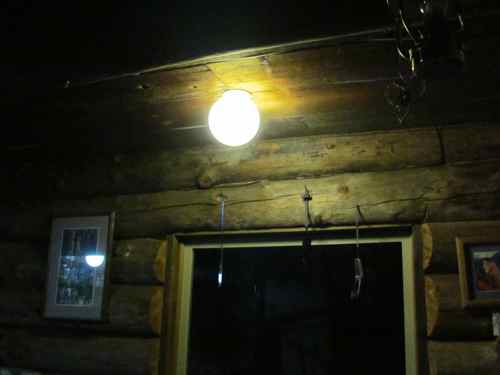For the last two posts I’ve been discussing our recent revamp of our lighting system. If you want to catch up, start with the post Light Housekeeping.
When the bulbs I’d ordered arrived, I installed two LED cluster bulbs in the cabin main floor. I put an iLLumi Projections 42x 5050 warm light cluster (paid link) in the lamp over the couch. It provides about 40-60 watts of mellow, warm light. Rated at 9 watts it’s using about 0.5 amp. In the kitchen, I installed an iLLumi Projections 60x 5050 cluster (paid link). This provided the same light as our fluorescents, roughly 100 watts. Rated at 15 watts, it uses 0.7 amp. By comparison, the fluorescents used about 1.0 amp each. Sorry, but I’m not much of an electrician. Watts only makes sense to me in terms of the amount of light a regular light bulb provides. I measure our usage in amps.
The first LED cluster cost $14.99, the larger $18.99. These are considerably more than fluorescents, but they’re sturdier, they draw less power, and they can be used for shorter periods of time. Their longevity will need to be assessed over time, but I believe we’ll be investing in more of these bulbs.
As for the kitchen sink fixture, that proved to be an eye opener.
I replaced the burned out bulb, but it didn’t light. I immediately decided it must be the ballast, and began laying plans for replacing that. To make sure I knew the correct ballast, I pulled out the bulb again. At that point, I realized that the fuse capsule in the fixture hung open . . . . The capsule had cracked and broken. It held the fuse, but made no connection.
I repaired the broken pieces of the capsule with super glue, and restored the connection. Then, on a whim, I retrieved the old bulb and plugged it back in. When I flipped the switch the light came on. It hadn’t been the bulb or the ballast, it was simply the fuse!
That reminded me of the importance of checking all components! While we may eventually be grateful for our new stash of bulbs for that fixture, the original bulb still burns. Who knows when we’ll need to replace it? At least I didn’t order a new ballast.


